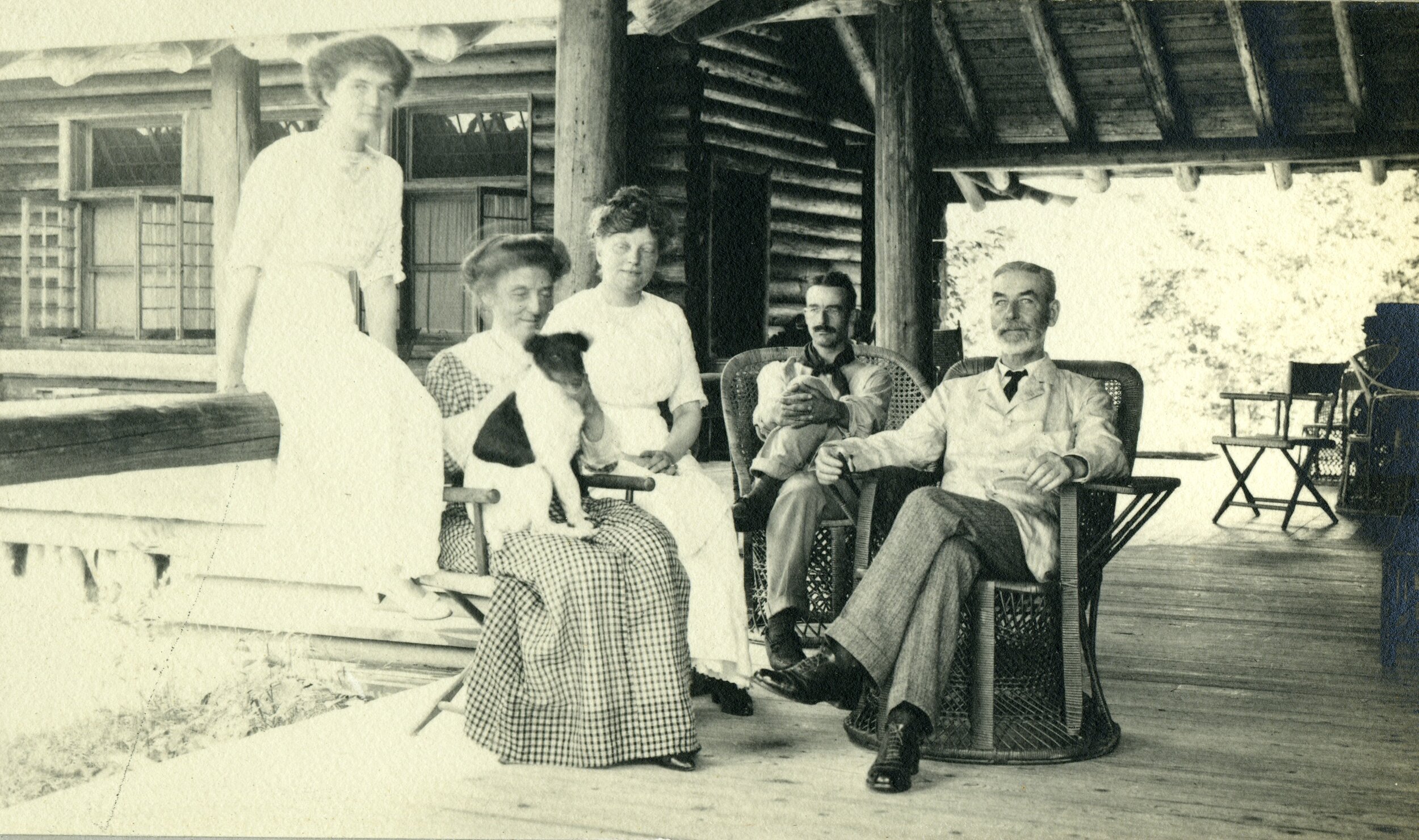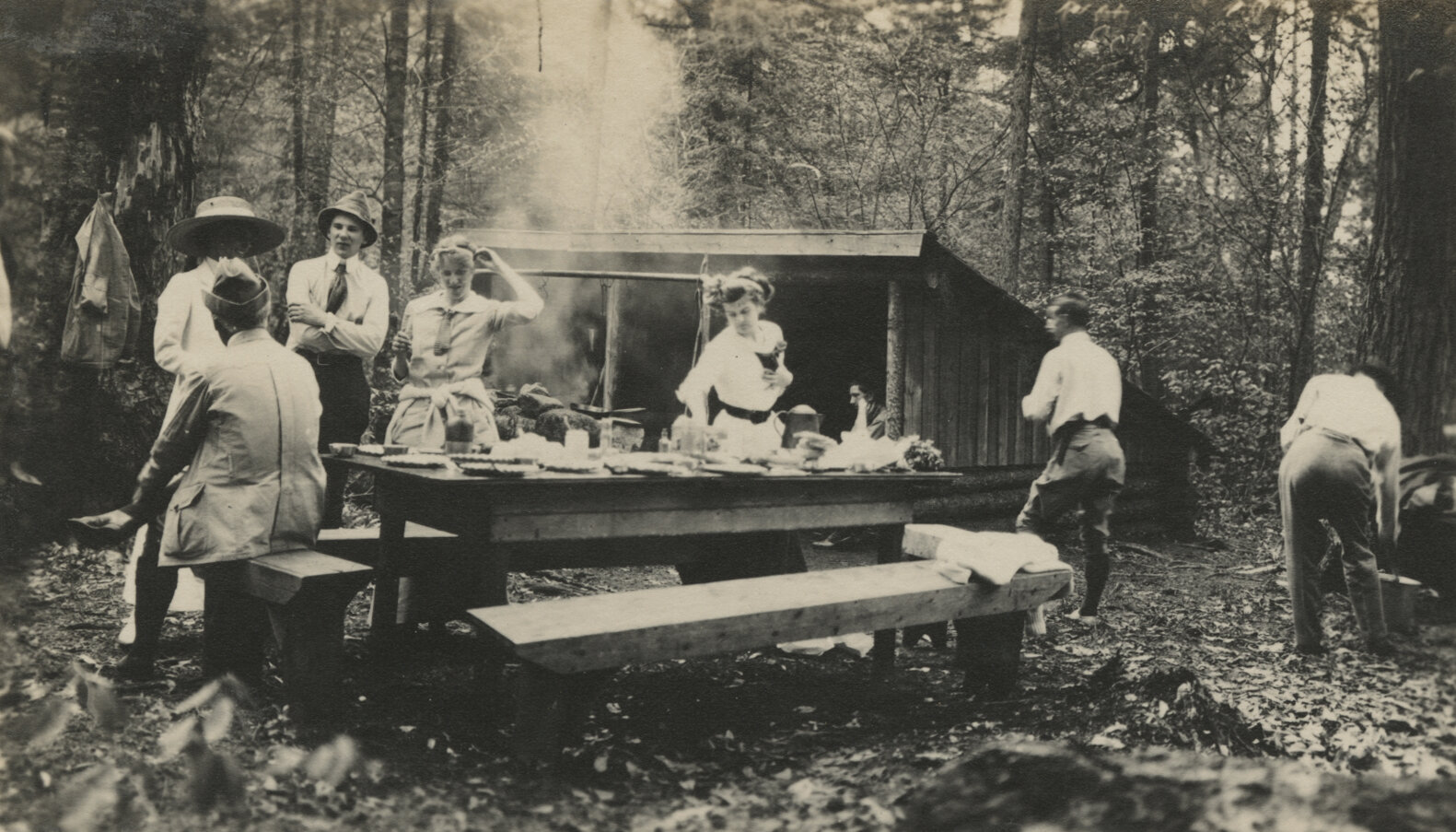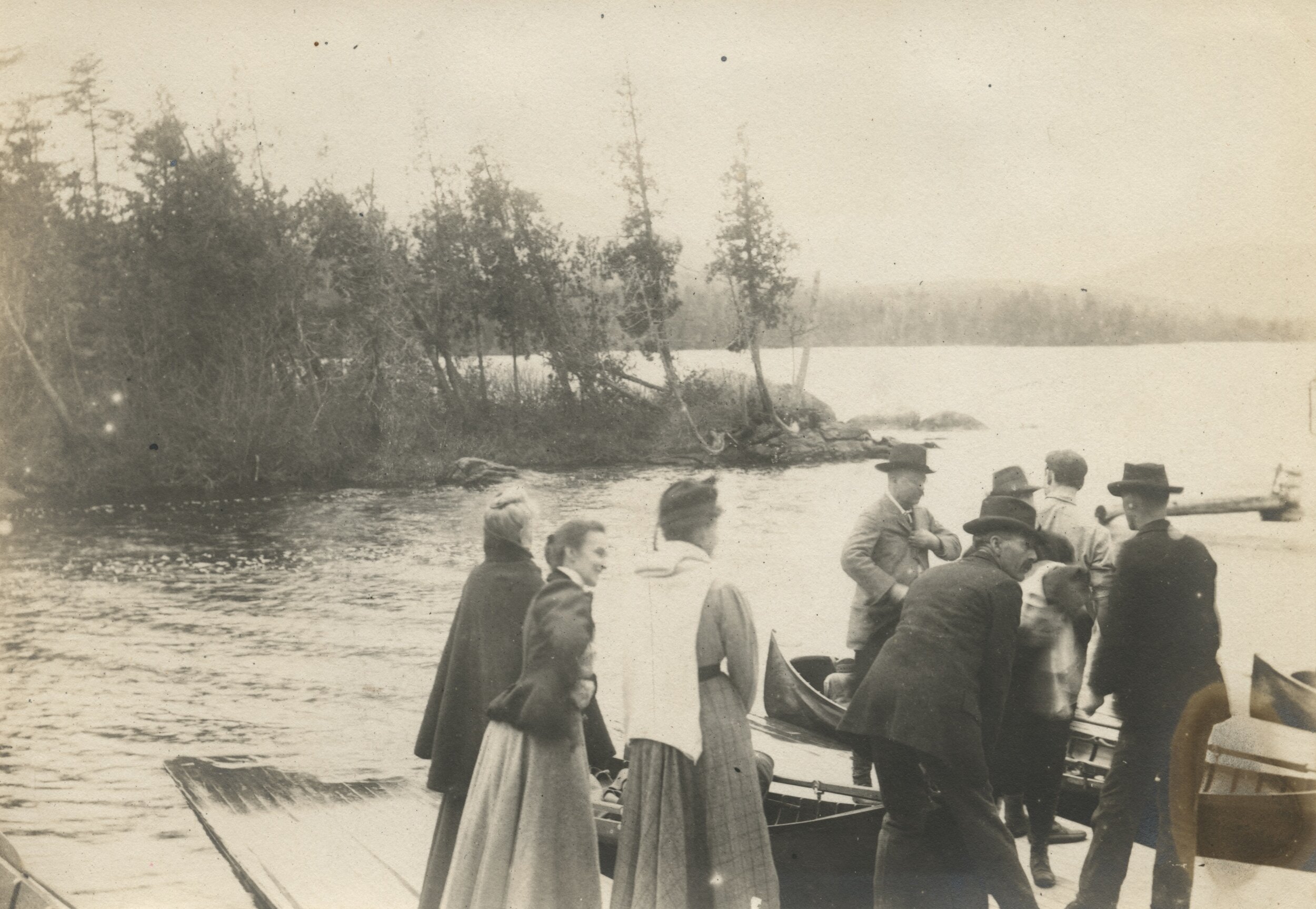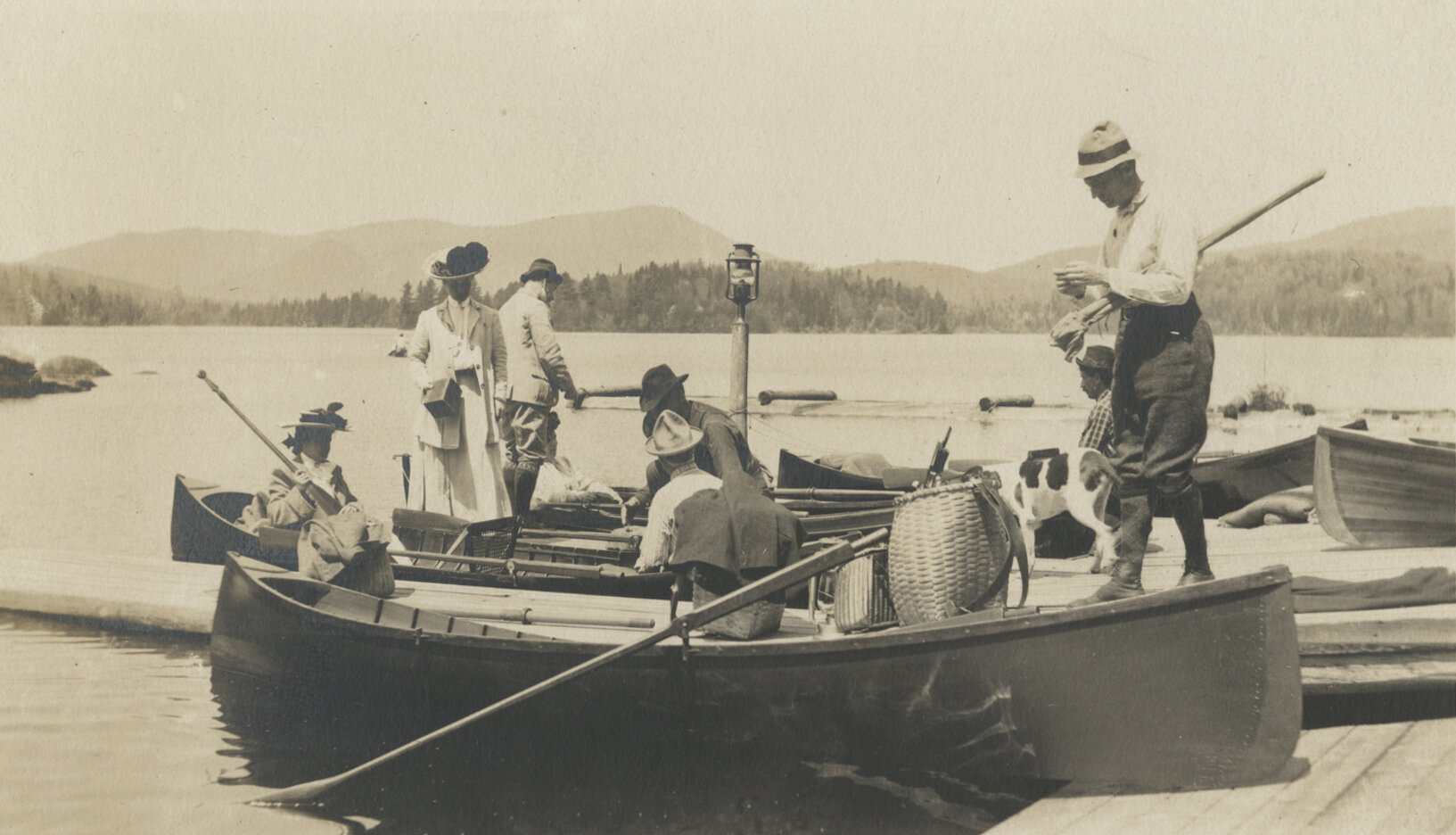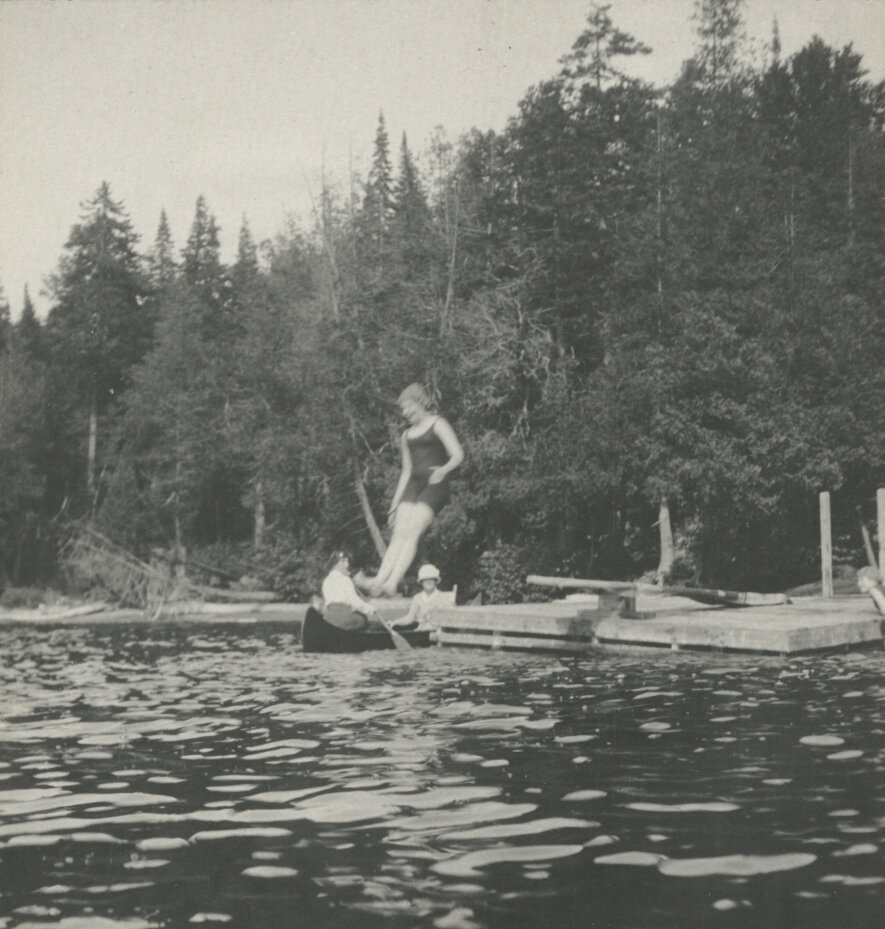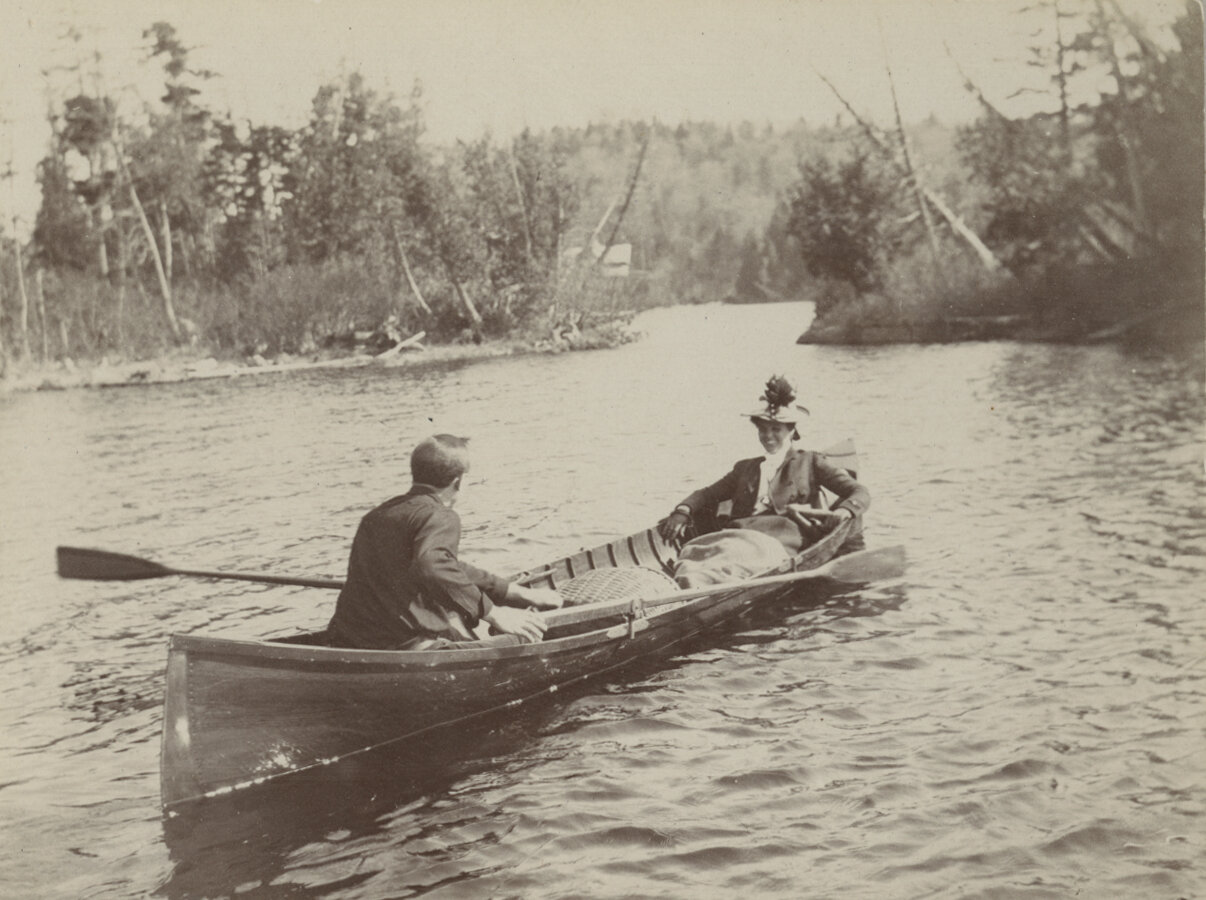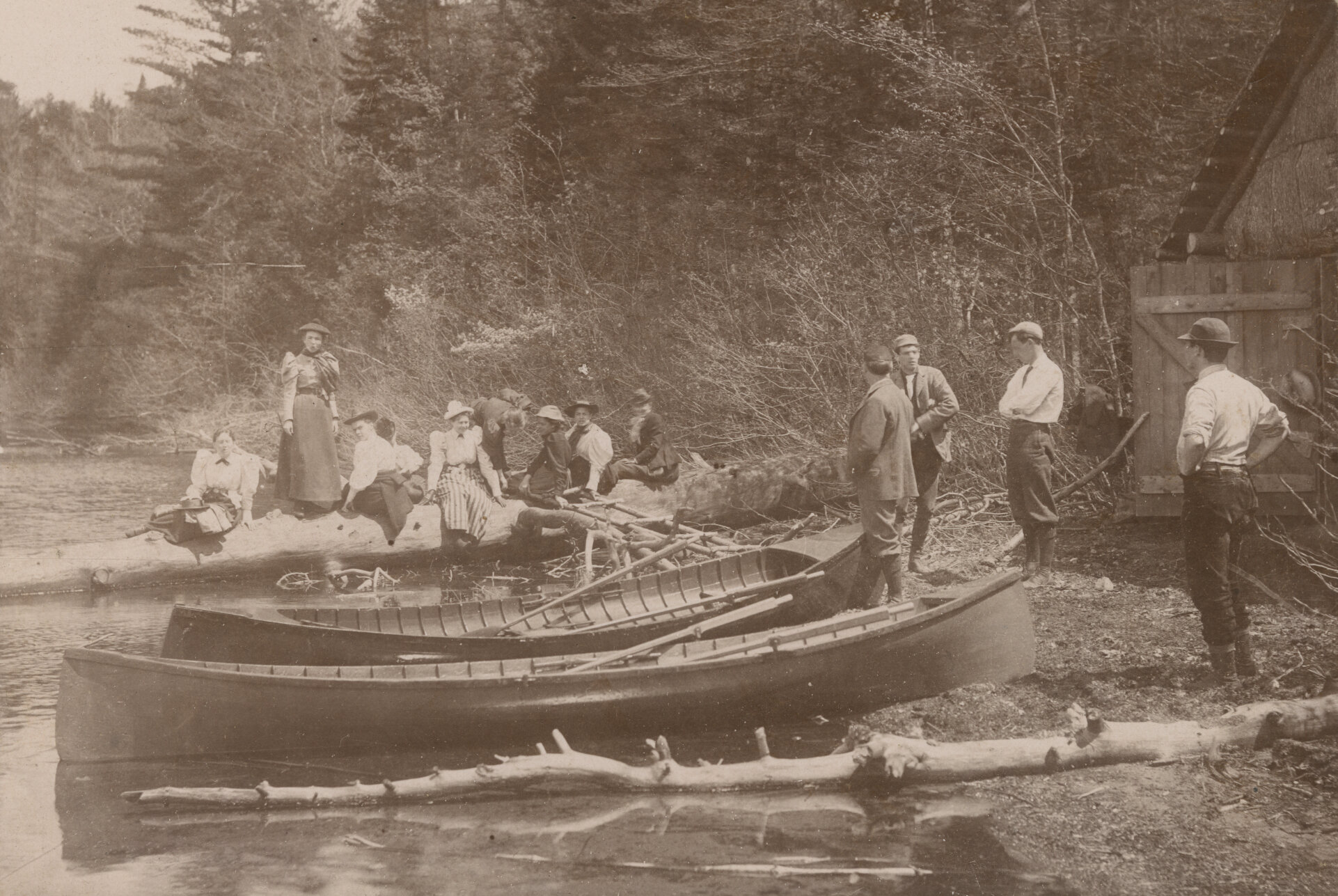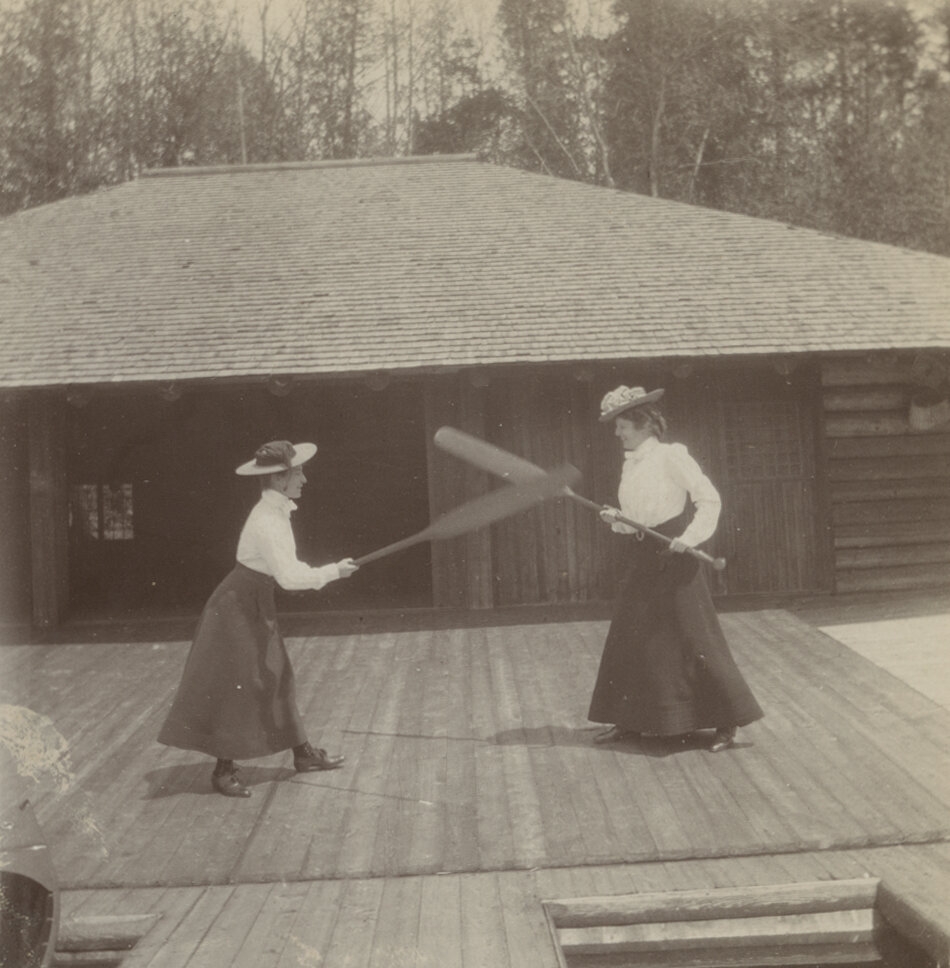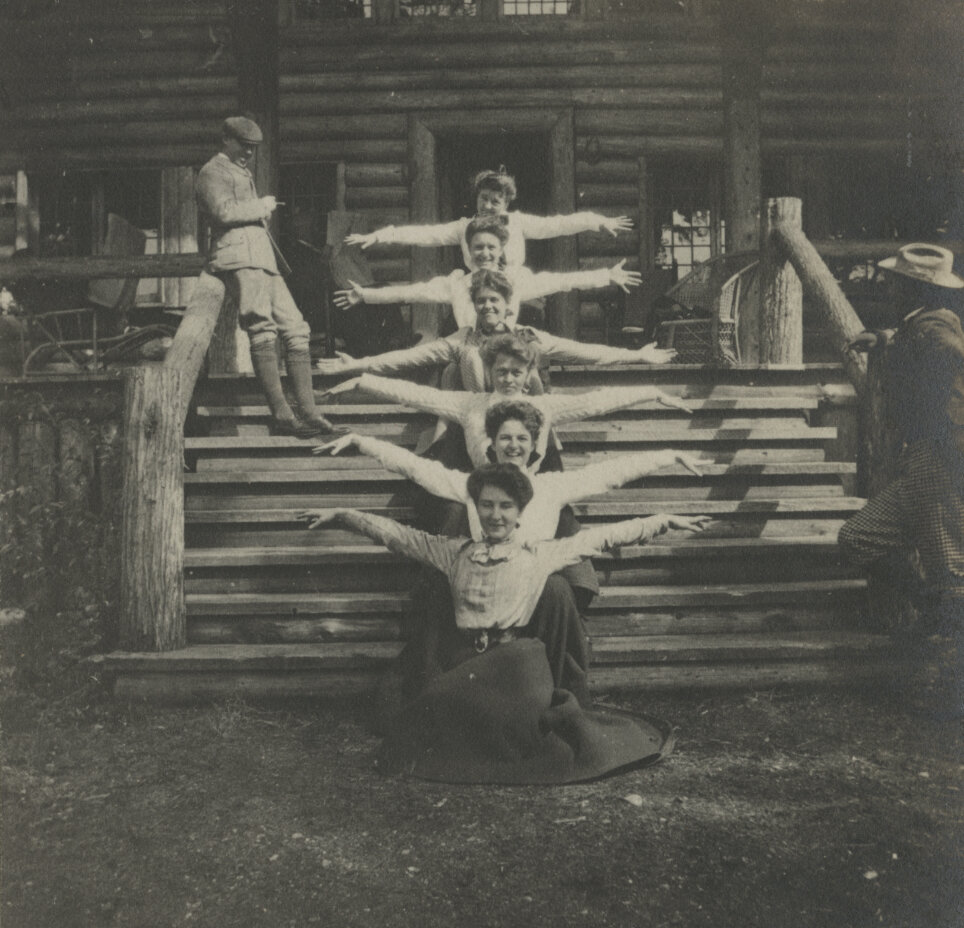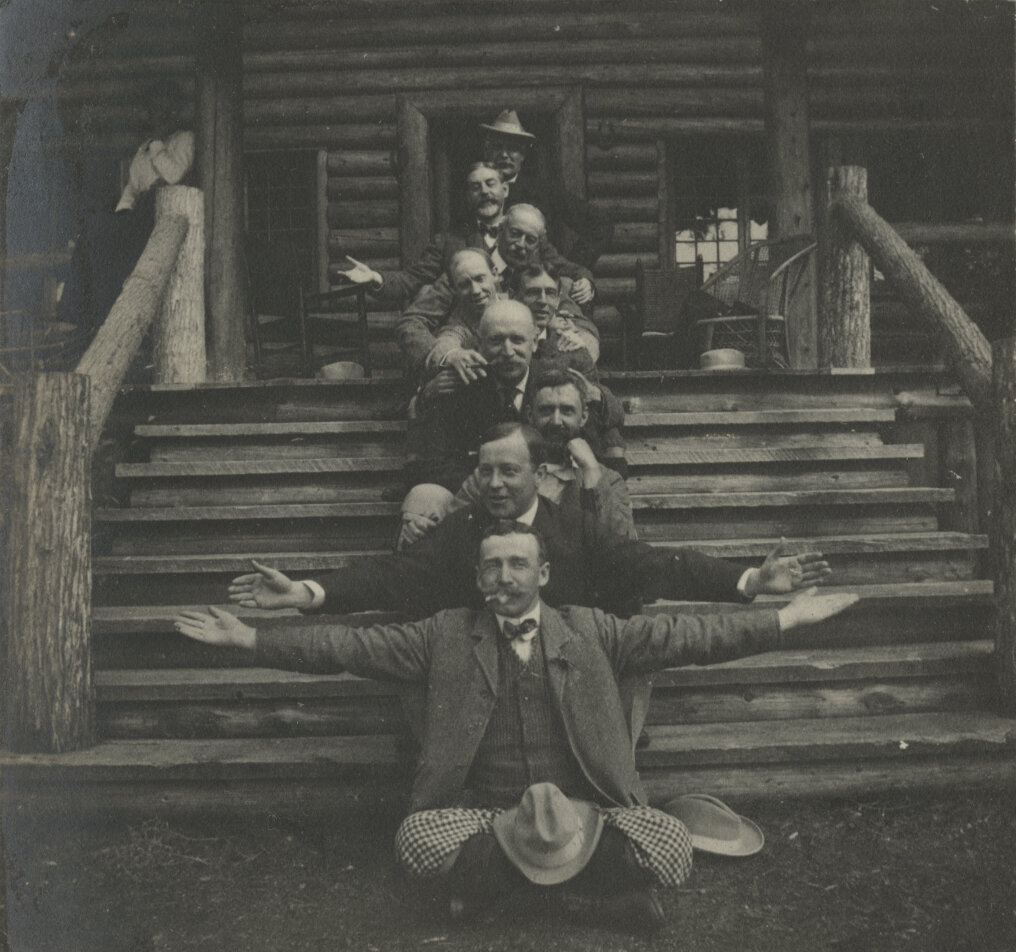History (1890s — 1970s)
In the late 19th and early 20th centuries, the ultra-wealthy began building vacation estates in New York’s Adirondack Mountains. Eventually known as “Great Camps,” the majority were luxurious playgrounds for the owners, with amenities such as tennis courts and bowling alleys to supplement the attractions of nature. Santanoni, one of the earliest of these camps, however, was different. It was intended to be both a family retreat and a working farm, which reflected the interests of the couple who created it.
In the 1890s, Albany-based banker Robert Pruyn and his wife Anna accumulated nearly 13,000 acres surrounding Newcomb Lake in the Adirondacks and set to work planning the family retreat Anna — an avid outdoors enthusiast — wanted, along with the working farm Robert — who was interested in modern agriculture — desired.
The main camp, designed by Robert H. Robertson and built from locally-forested spruce trees, features more than 5,000 square feet of porches facing the lake — along with a Japanese influence rarely seen in the area. (Pruyn spent several years as a young man living in Japan with his father, who was Abraham Lincoln’s minister to Japan, and developed an affinity for Japanese architecture.) With accommodations available for both family and friends, the camp served as a hub for Anna’s beloved outdoor activities, including swimming, boating, and hiking.
The farm Robert desired, where he experimented with different types of plants and technologies, allowed Santanoni to be largely self-sustaining for many years. This creativity was driven both by Robert’s desire to expand the field of agriculture, but also to compensate for the limitations of farming in the Adirondacks, which is notoriously challenging. In addition to produce, Santanoni’s farm had a variety of livestock, including pigs, chickens, and dairy cows.
The Pruyn family spent time at Santanoni from 1893, when they celebrated its first summer with great fanfare, through 1953, when Robert and Anna’s heirs sold it to the Melvin family of Syracuse, who owned it for most of the next 20 years, selling it after a tragedy befell the family. At that time, the entire property — nearly 13,000 acres — was sold to the Adirondack Conservancy Committee of The Nature Conservancy and transferred to the state of New York to be added into the State Forest Preserve.
For a more in-depth history, visit the Santanoni section of the Adirondack Architectural Heritage (AARCH) website.


